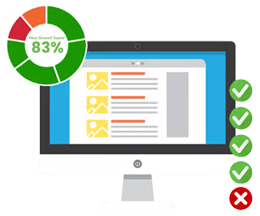How Can I Optimise Images on My Website for Better Performance?

Images are a crucial part of modern web design, enhancing the visual appeal of your website and conveying information effectively. However, if not optimised properly, images can slow down your site's loading speed and negatively impact user experience.
Why Image Optimisation Matters
Page Loading Speed: Slow-loading websites can frustrate users and lead to higher bounce rates. Optimising images reduces file sizes, which, in turn, speeds up page loading times.
User Experience: Faster-loading pages improve user experience and satisfaction, increasing the likelihood of visitors staying on your website and converting.
Search Engine Optimisation (SEO): Search engines, like Google, consider page speed when ranking websites. Faster sites are more likely to rank higher in search results, potentially boosting organic traffic.
How to Optimise Images on Your Website
Choose the Right File Format:
Use JPEG for photographs and images with lots of colors.
Use PNG for images with transparency or simple graphics.
Use SVG for icons and logos when possible, as they are vector-based and extremely lightweight.
Resize Images:
Resize images to the exact dimensions needed for your website. Avoid using oversized images that need to be scaled down in HTML or CSS.
Compress Images:
Use image compression tools or software to reduce file sizes while maintaining acceptable quality.
Optimise Alt Text:
Add descriptive alt text to your images for accessibility and SEO. Alt text helps visually impaired users understand the content of the image and also contributes to SEO.
* * * * *
Optimising images on your website is a crucial step in improving page loading speed, enhancing user experience, and boosting SEO. By following these best practices for image optimisation, you can ensure that your website loads quickly, looks visually appealing, and keeps visitors engaged. Don't underestimate the impact that well-optimised images can have on your site's overall performance.




